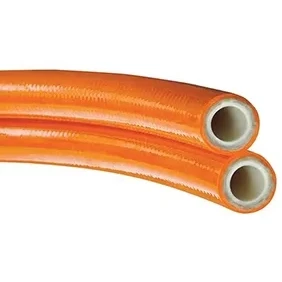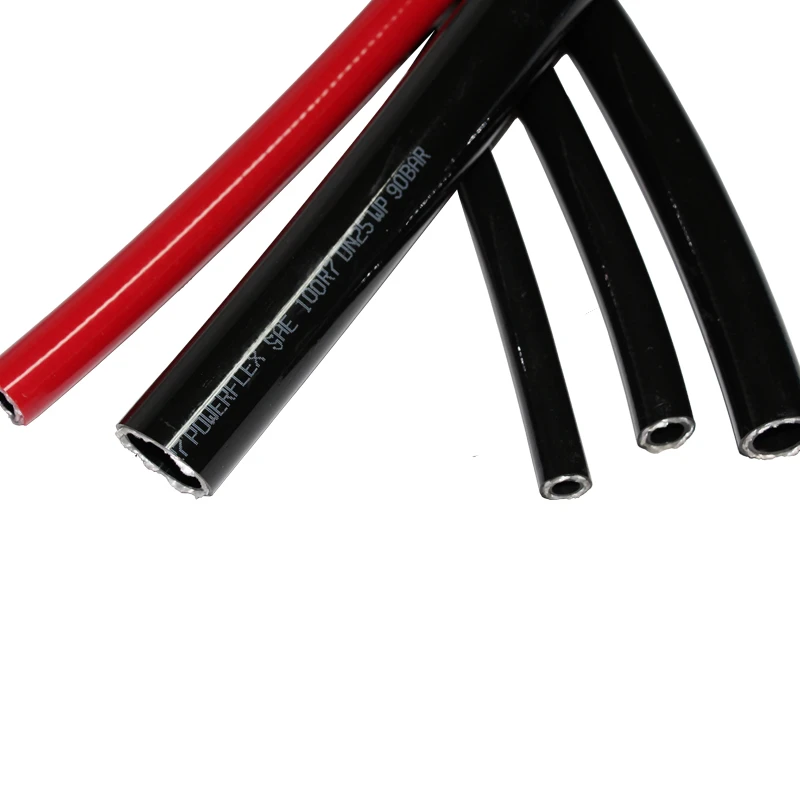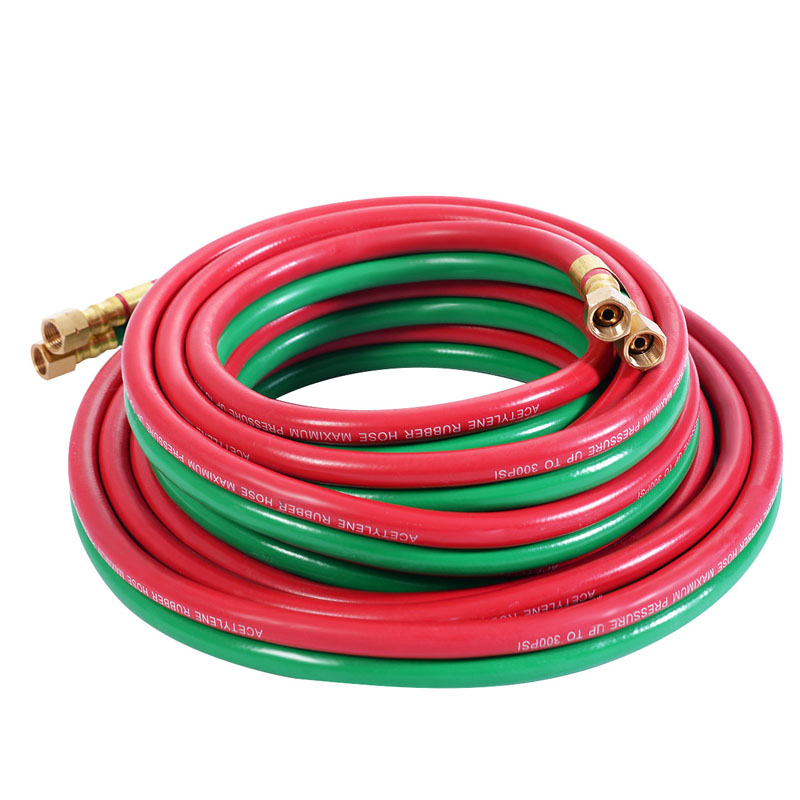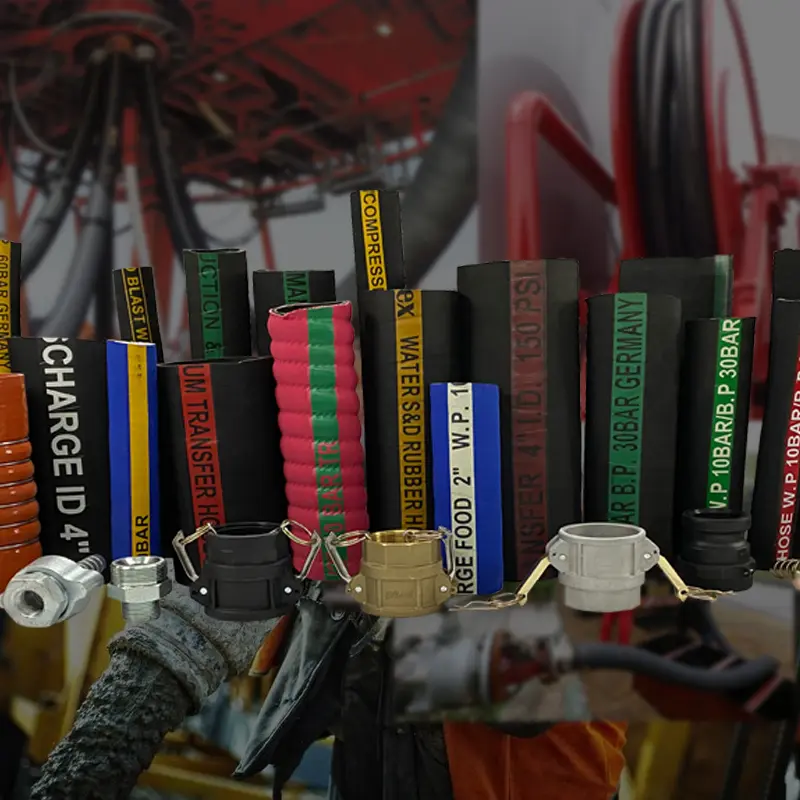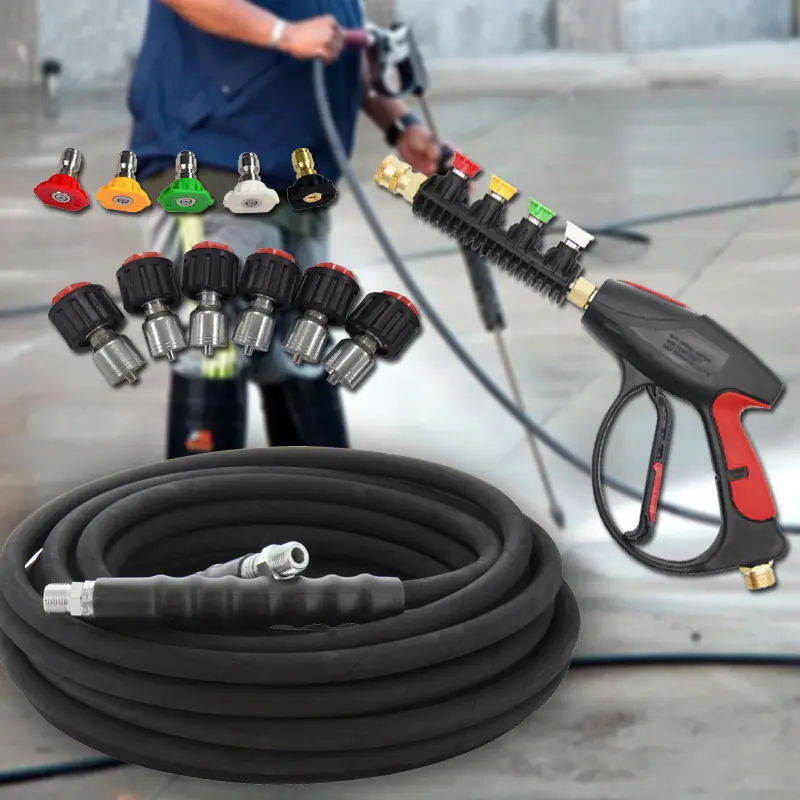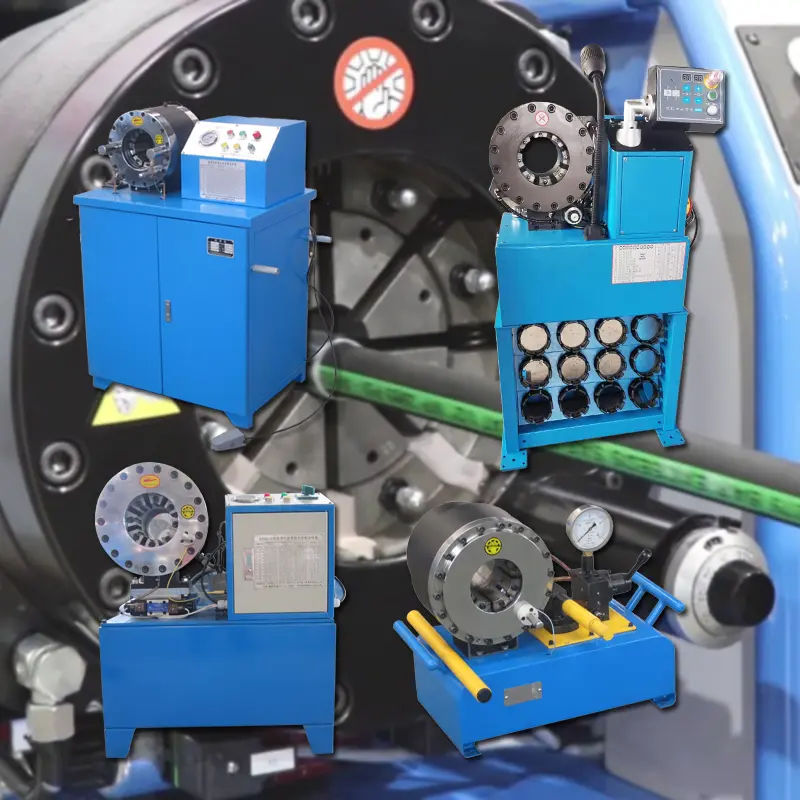High-pressure hydraulic hoses are essential components in fluid power systems, designed to safely transmit hydraulic fluid under high pressure. Custom hydraulic hoses come in various types to meet specific pressure and flexibility requirements. Common high-pressure hose standards include SAE 100 R2, R9, R12, R13, R15, and EN 856 4SP/4SH. Each type serves different pressure ranges and applications.
For example, SAE 100 R2 hoses typically handle pressures up to 4000 psi (around 280 bar), making them suitable for medium-high pressure hydraulic systems. Meanwhile, R9 and R12 hoses are designed for higher pressure needs, with R12 hoses supporting pressures upwards of 6000 psi (about 420 bar). EN 856 4SP and 4SH hoses, featuring multi-spiral steel wire reinforcement, can handle ultra-high pressures beyond 10,000 psi (700 bar). This variety allows users to select hoses perfectly tailored for their machinery and operational demands
.
Understanding these pressure ranges helps ensure system safety and efficiency. High-pressure hoses must withstand not only steady hydraulic pressure but also pressure spikes, temperature variations, and environmental factors.

Hydraulic Hose Factory Reinforcement Methods: Braided vs. Spiral
The reinforcement method of hydraulic hoses is a key factor affecting pressure resistance and flexibility. At a professional hydraulic hose factory, two primary reinforcement methods are used: steel wire braiding and steel wire spiraling.
SAE 100 R2 hoses use steel wire braided reinforcement. This method involves weaving steel wire strands around the hose tube, offering excellent flexibility and moderate to high-pressure resistance. Braided hoses are often favored in applications where bending and movement are frequent, such as mobile machinery.
On the other hand, hoses like SAE 100 R9, R12, R13, R15, and EN 856 4SP/4SH employ steel wire spiral reinforcement. Spiral-wound wire layers are wrapped tightly in a helical pattern, providing significantly greater pressure resistance. This design enhances durability under extreme pressure conditions, making these hoses ideal for heavy-duty hydraulic systems found in mining, construction, and industrial equipment.
Each reinforcement method offers trade-offs: braided hoses provide better flexibility but lower maximum pressure limits, while spiral hoses deliver superior pressure capacity at the cost of some flexibility.
Hydraulic Hose China: High-Pressure vs. Low-Pressure Hose Differences
Hydraulic hose China manufacturers produce a broad range of hoses, from low to high pressure. The primary difference between high-pressure and low-pressure hydraulic hoses lies in their construction and pressure rating.
High-pressure hoses are built with multiple layers of steel wire braiding or spiraling for reinforcement. These layers enable them to handle high operating pressures, often exceeding 3000 psi (210 bar) and sometimes reaching 10,000 psi (700 bar) or more. The inner tubes are made of synthetic rubber or thermoplastics, carefully selected for chemical compatibility with hydraulic fluids.
Low-pressure hoses, however, usually rely on textile or fabric reinforcements rather than steel wire. Their pressure ratings are significantly lower, typically below 3000 psi, but they offer greater flexibility and are often lighter. Low-pressure hoses suit applications such as return lines or lubrication systems, where pressure demands are less intense.
Choosing between high-pressure and low-pressure hoses depends on the system’s pressure requirements, environmental conditions, and flexibility needs. Hydraulic hose manufacturers in China combine advanced production technologies with competitive pricing to deliver hoses meeting international standards like SAE, DIN, and ISO.
Hydraulic Hose Manufacturer Materials and Standards
A qualified hydraulic hose manufacturer ensures that every hose meets strict quality and safety standards. Hydraulic hoses are typically made from a combination of synthetic rubber, thermoplastics, and metal reinforcements, each playing a vital role.
The inner tube is usually made from synthetic rubber or thermoplastic materials that are compatible with hydraulic fluids and resistant to chemical degradation. This layer must prevent fluid leakage and maintain hose integrity under operating conditions.
The reinforcement layer consists of braided or spiral-wound steel wires or textile fibers. This reinforcement provides the hose with the necessary strength to withstand internal pressures and external mechanical forces.
Finally, the outer cover is made from abrasion-resistant rubber or thermoplastics, designed to protect the hose from environmental damage such as UV exposure, chemicals, and physical wear. This outer layer also helps maintain hose flexibility and durability over time.
Manufacturers produce hoses conforming to international standards such as SAE 100, DIN, and ISO to guarantee performance consistency, safety, and reliability. These standards specify construction details, pressure ratings, temperature ranges, and testing procedures to ensure hoses meet customer demands.
Hydraulic Hose Factory Applications and Industry Uses
Hydraulic hoses manufactured by a trusted hydraulic hose factory serve a wide range of industries. High-pressure hoses are critical components in the manufacturing and maintenance of heavy machinery such as excavators, agricultural equipment, coal mining machines, and industrial presses.
These hoses are engineered to endure harsh operating conditions including high pressure, temperature fluctuations, and exposure to dirt, chemicals, and UV light. For example, mining equipment requires hoses that resist abrasion and high pressure, while agricultural machinery benefits from hoses with high flexibility and chemical resistance.
The versatility of hydraulic hoses means they are indispensable in sectors beyond construction and mining — including material handling, manufacturing automation, and even marine applications. Selecting hoses from a reputable factory ensures access to products that meet performance, safety, and longevity criteria.
Why Choose Custom Hydraulic Hoses?
Opting for custom hydraulic hoses gives end-users the advantage of hoses tailored specifically to their operational needs. Customization includes choosing hose diameter, length, reinforcement type, pressure rating, and fittings.
Custom hoses provide precise compatibility with machinery, reducing the risk of premature failure due to mismatched specifications. This customization improves hydraulic system reliability and safety, minimizing costly downtime and maintenance.
Additionally, custom hoses often allow for better routing in tight spaces and improved performance under unique environmental conditions. Reliable manufacturers offer consultation services to help customers specify the ideal hose construction for their applications.
FAQs About Custom Hydraulic Hoses
What is the main difference between braided and spiral hydraulic hose reinforcement?
Braided reinforcement involves weaving steel wires around the hose, offering flexibility and moderate pressure resistance. Spiral reinforcement uses steel wires wrapped in a helical pattern, enabling higher pressure resistance but less flexibility.
What pressure ranges do SAE 100 R2 and R13 hoses typically support?
SAE 100 R2 hoses usually support pressures up to 4000 psi (280 bar), while R13 hoses can handle pressures up to 6000 psi (420 bar) or higher, depending on hose size and construction.
How can I tell if I need a high-pressure or low-pressure hydraulic hose?
Assess your hydraulic system’s operating pressure. High-pressure hoses are necessary for pressures over 3000 psi (210 bar), while low-pressure hoses suit pressures below this, typically for return or low-stress lines.
Why is it important to buy hydraulic hoses from a certified hydraulic hose factory?
Certified factories adhere to international quality and safety standards, ensuring hoses can withstand specified pressures and environmental conditions, preventing leaks, bursts, and system failures.
Can hydraulic hoses be customized for special applications?
Yes, many manufacturers offer custom hydraulic hoses tailored to length, diameter, pressure rating, material compatibility, and fitting types to meet unique operational requirements.
Choosing high-quality custom hydraulic hoses from a trusted hydraulic hose manufacturer guarantees performance, safety, and longevity for your hydraulic systems. Whether you need flexible braided hoses or heavy-duty spiral reinforced hoses, our products meet the toughest standards.
Explore our wide range of hoses manufactured by a professional hydraulic hose factory. Visit our website today to consult with our experts, request samples, or place orders designed for your specific industry needs. Don’t compromise on hose quality—invest in hoses that protect your equipment and keep your operations running smoothly.
Product Application











